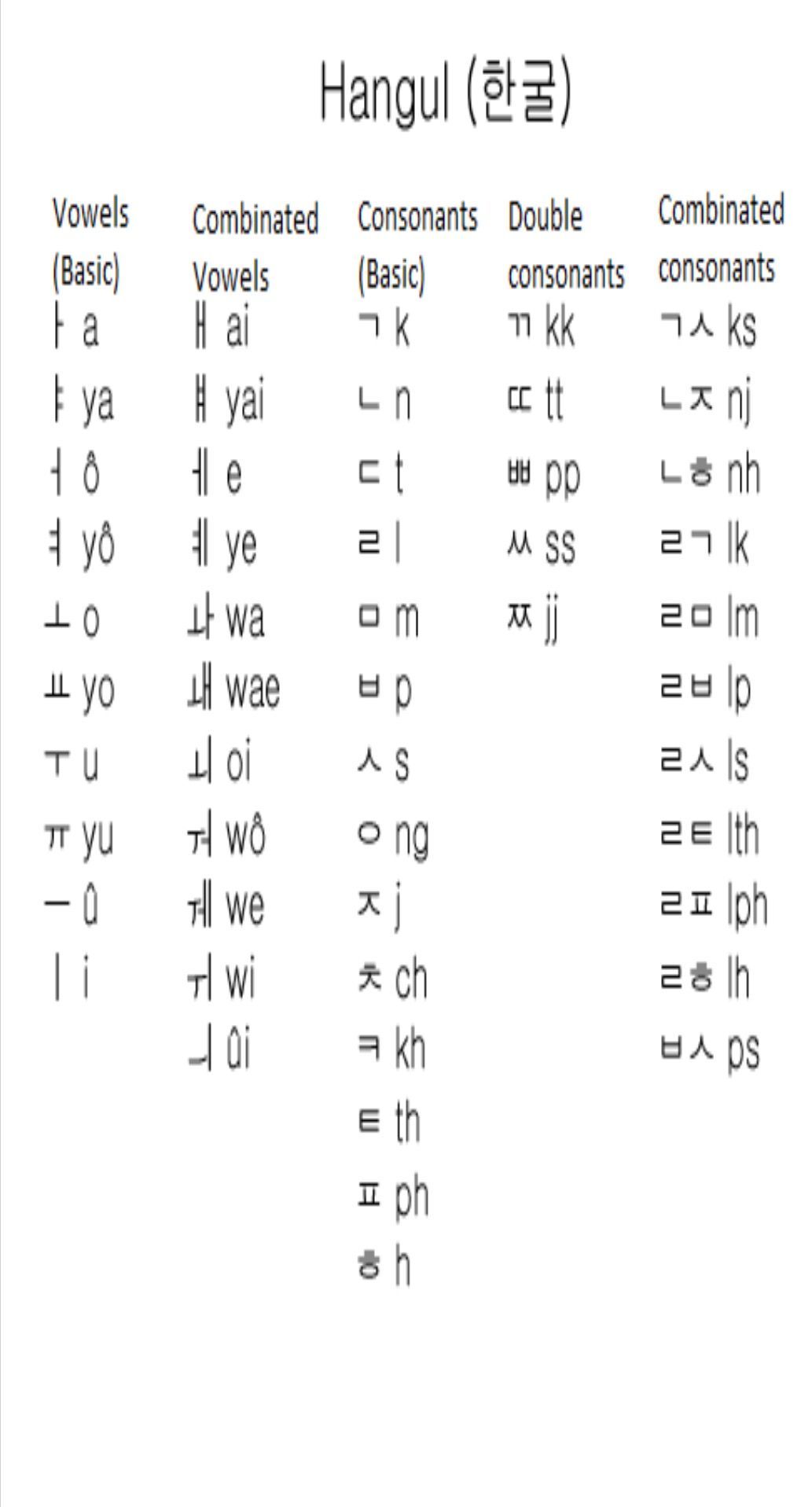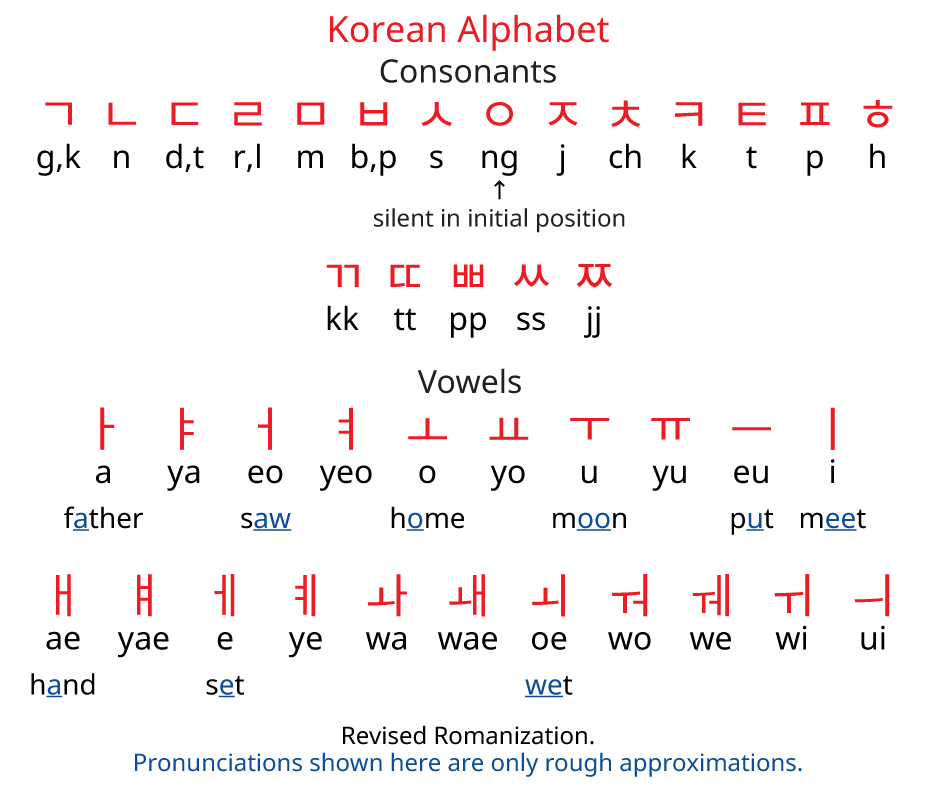Koreanisches Hangul Alphabet Png, Vektoren, Clipart und PSD zum kostenlosen Download Pngtree

Learn Hangul (Part 6) Learn Korean with GO! Billy Korean
The Korean alphabet, referred to as Hangul within South Korea, is the official writing system of the Korean language. Created in the 15th century by King Sejong the Great to increase literacy, Hangul is renowned for its simplicity and logical design. Although the Korean language is one of the hardest languages to learn for English speakers, Hangul enables ease of learning and pronunciation for.

Postcard with Calligraphic Text Happy Korean Alphabet Day in Korean Language. Korean Traditional
The syllables are then joined together to form a word, just like in English. Let's use the word hangul as an example. In Korean, it's written as 한글 . The first syllable 한 is spelled using the consonant ㅎ + the vowel ㅏ + the consonant ㄴ. The second syllable is spelled: consonant ㄱ + vowel ㅡ + consonant ㄹ.

Pin on Korean language
The Korean alphabet, known as Hangul (English: / ˈ h ɑː n ɡ uː l / HAHN-gool; Korean: 한글) in South Korea and Chosŏn'gŭl (조선글) in North Korea, is the modern official writing system for the Korean language. The letters for the five basic consonants reflect the shape of the speech organs used to pronounce them, and they are systematically modified to indicate phonetic features.

Choayo Korean Hair Salon Alam Sutera Tickets Start from Rp 108.000
in Hangul: 저 [name]씨 좋아해요. This is the polite way to say "I like you" in Korean. Notice how the word for "I" changes from na (나) to jeo (저). By using jeo (저), you are basically "lowering" yourself, which will make you appear more polite and respectful. Furthermore, it will come off as slightly rude or impolite to.

Hangul letters and pronunciation guide. Learn korean alphabet, Korean words, Korean alphabet
This is the Korean word for " hello .". It has 5 syllable blocks, and each syllable block has 2 or 3 letters. In the first two-syllable blocks, there are two Hangul letters on the top and one on the bottom. Following our rule of left to right, top to bottom, we would read in the order 1, 2, 3, as shown above.

We're Scared... 🌭 『Choayo? Ep. 8 Korean Corn Dogs』 [ENG SUB] YouTube
The Hangul were suppressed, banned, revived, and reformed many times before being declared Korean's official alphabet in 1946, after the country achieved independence from Japan. Nevertheless, the success and influence of the Hangul is clearly evident in modern times, as it's still the official writing system of both South and North Korea.

These Aesthetic Korean Cupcakes Are Prettier Than You 🧁 『Choayo? Ep. 15』 [ENG SUB] YouTube
Choayo is a verb that means "to be good" or "to be pleasing.". It can also be translated as "to like" or "to prefer.". The word is commonly used to express approval or admiration for something or someone. It can also be used to describe how someone feels about a particular situation or experience.

【K社韓文小百科】韓國網絡用語的首字母縮寫大法! 從此和韓國朋友聊天不再像讀天書 KSD 韓星網 (生活)
Texts & Literature. • Korean National Library. • LyrikLine: poems in Korean, with translation (+ audio) • Language, forms, prosody and themes by Peter Lee, in History of the Korean literature (2003) • books about the Korean literature: Google books. → bilingual Bible in Korean, English & other languages.

Hangul Wallpapers Wallpaper Cave
Hangul (한글) is the official writing system for South Korea. The term Hangul can be used interchangeably with the Korean Alphabet. Hangul consists of 14 consonants and 10 vowels. To form Korean characters, Hangul letters are grouped into syllabic blocks, which is explained in more detail in LingoDeer's hangul lesson.
What is the meaning of "choayo"? Question about Korean HiNative
Going back to the basics, the Korean writing system is an alphabetic syllabary, meaning that each character is a single syllable. However, the individual parts of a character are letters of the alphabet, just like how English has its own alphabet. And like English, hangul consists of 14 consonants and 10 vowels, altogether making it a 24-letter.

Don't drop the egg! 🥚 『Choayo? Ep. 29 Korean Egg Drop Sandwich』 [ENG SUB] YouTube
Here are the two ways to say "I like you" in Korean in a formal way: 1. 좋아합니다 (joahamnida) 좋아합니다 (joahamnida) is the most common way to say "I like you" in Korean. This uses the verb "to like" on its own. This formal Korean expression can also be used to say, "I like it.". 2. 저는 당신을 좋아합니다.

Korean Alphabet
There are 4 modules in this course. This course introduces Korean characters,'Hangeul', and provides high-level knowledge related to Hangeul. In this course, the background of 'Hangul' is created, who made the Hangeul, and according to what principle it is systematically explained. It also introduces anecdotes related to Korean tourist.

Learn Korean alphabet Learn korean alphabet, Korean alphabet, Learn korean
Instead of 그립다 (geuripda), the expression 보고 싶다 (bogo sipda) is used when people want to say "I miss you" in Korean. 보고 싶다 (bogo sipda) literally means "I want to see.". It is made up of the verb 보다 (boda | to see) and the suffix -고 싶다 (-go sipda), which expresses the idea of wanting to do a particular.

Is Korean croffle actually good? 🧇 『Choayo? Ep. 25 Kuro Kuro Croffle』 [ENG SUB] YouTube
Hangul is made up of 14 basic consonants and 10 basic vowels. Each Korean character is made up of a consonant and a corresponding vowel. Sometimes, the vowels can also be written alone to form syllable blocks, the familiar cute square shapes. 10 vowel letters (ㅏ ㅑ ㅓ ㅕ ㅗ ㅛ ㅜ ㅠ ㅡ ㅣ)

Hangul Cartoons, Illustrations & Vector Stock Images 658 Pictures to download from
yoboseyo (in Hangul: 여보세요) On the phone. Regardless of whether you're the person answering or the caller, when you're on the phone and want to say hello, yoboseyo (여보세요) is the phrase you should use. Furthermore, you use it regardless of whether the person you are talking to is older, younger, higher status or lower status.

Koreanisches Hangul Alphabet Png, Vektoren, Clipart und PSD zum kostenlosen Download Pngtree
Hangul (meaning 'Great Script') was developed by King Sejong the Great, the fourth king of the Joseon period, in 1443. King Sejong wanted to establish an independent cultural identity for Korea through a unique writing system. With the help of a group of scholars, he created a simple alphabet of 28 letters (4 of which have since become.